6 Unmissable Mountains in Türkiye
Ağrı Dağı - Mt Ararat
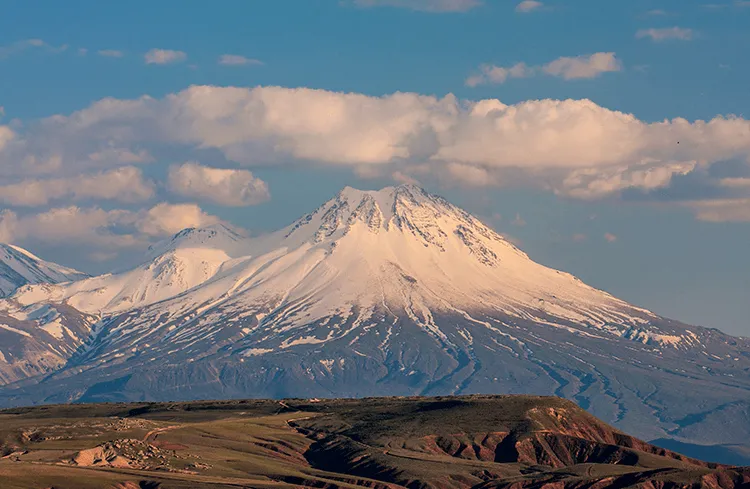
Mt. Ararat is in fact a system of 2 mountains, lesser Mt Ararat and greater Mt. Ararat. Both are dormant, compounded volcanoes. Greater Mt Ararat is the highest mountain in Türkiye, standing at an elevation of 5,137 m (16,854 ft). Lesser Mt Ararat stands at 3,896 m (12,782 ft). These mountains have a long and illustrious history and are held sacred by many as the recorded site of Noah’s Ark.
The first to ascend the peak was Professor Frederick Von Parat on October 9th, 1829. The second ascent came over 140 years later when the former president of the Turkish Mountaineering Federation, Dr. Bozkurt Ergor reached the summit on 21 February 1970, sparking a wave of climbers in the 1980s, ultimately leading to a ban on climbing the fabled peak. This ban was lifted in 1998 and climbs are now permissible only up certain faces of the mountain due to the necessity of maintaining open communication channels with the brave souls who dare to attempt the ascent.
Climbing is best in July-September though winter climbs are also possible. Only experienced climbers with appropriate equipment should attempt the full trek. For those who’d rather watch from the sidelines, the nearby town of Dogubeyazit is charming no matter the season and is close to Ishak Pasha Palace amongst other historical sites.
Erciyes
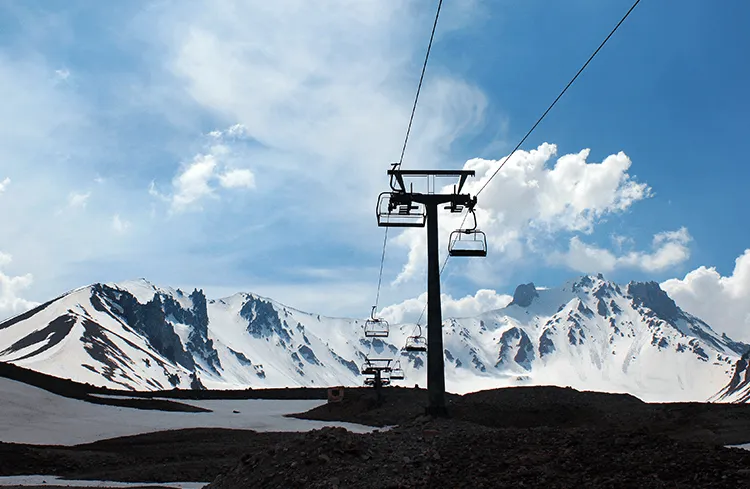
Mt. Ararat is in fact a system of 2 mountains, lesser Mt Ararat and greater Mt. Ararat. Both are dormant, compounded volcanoes. Greater Mt Ararat is the highest mountain in Türkiye, standing at an elevation of 5,137 m (16,854 ft). Lesser Mt Ararat stands at 3,896 m (12,782 ft). These mountains have a long and illustrious history and are held sacred by many as the recorded site of Noah’s Ark.
The first to ascend the peak was Professor Frederick Von Parat on October 9th, 1829. The second ascent came over 140 years later when the former president of the Turkish Mountaineering Federation, Dr. Bozkurt Ergor reached the summit on 21 February 1970, sparking a wave of climbers in the 1980s, ultimately leading to a ban on climbing the fabled peak. This ban was lifted in 1998 and climbs are now permissible only up certain faces of the mountain due to the necessity of maintaining open communication channels with the brave souls who dare to attempt the ascent.
Climbing is best in July-September though winter climbs are also possible. Only experienced climbers with appropriate equipment should attempt the full trek. For those who’d rather watch from the sidelines, the nearby town of Dogubeyazit is charming no matter the season and is close to Ishak Pasha Palace amongst other historical sites.
Palandöken
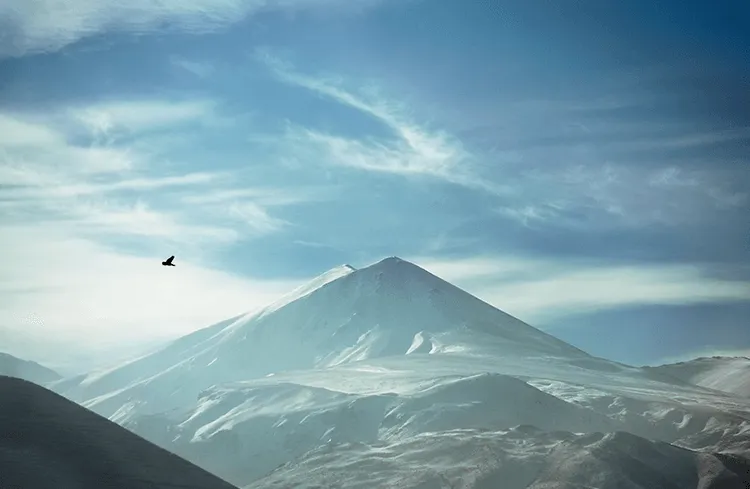
Mt. Ararat is in fact a system of 2 mountains, lesser Mt Ararat and greater Mt. Ararat. Both are dormant, compounded volcanoes. Greater Mt Ararat is the highest mountain in Türkiye, standing at an elevation of 5,137 m (16,854 ft). Lesser Mt Ararat stands at 3,896 m (12,782 ft). These mountains have a long and illustrious history and are held sacred by many as the recorded site of Noah’s Ark.
The first to ascend the peak was Professor Frederick Von Parat on October 9th, 1829. The second ascent came over 140 years later when the former president of the Turkish Mountaineering Federation, Dr. Bozkurt Ergor reached the summit on 21 February 1970, sparking a wave of climbers in the 1980s, ultimately leading to a ban on climbing the fabled peak. This ban was lifted in 1998 and climbs are now permissible only up certain faces of the mountain due to the necessity of maintaining open communication channels with the brave souls who dare to attempt the ascent.
Climbing is best in July-September though winter climbs are also possible. Only experienced climbers with appropriate equipment should attempt the full trek. For those who’d rather watch from the sidelines, the nearby town of Dogubeyazit is charming no matter the season and is close to Ishak Pasha Palace amongst other historical sites.
Kaçkar

Mt. Ararat is in fact a system of 2 mountains, lesser Mt Ararat and greater Mt. Ararat. Both are dormant, compounded volcanoes. Greater Mt Ararat is the highest mountain in Türkiye, standing at an elevation of 5,137 m (16,854 ft). Lesser Mt Ararat stands at 3,896 m (12,782 ft). These mountains have a long and illustrious history and are held sacred by many as the recorded site of Noah’s Ark.
The first to ascend the peak was Professor Frederick Von Parat on October 9th, 1829. The second ascent came over 140 years later when the former president of the Turkish Mountaineering Federation, Dr. Bozkurt Ergor reached the summit on 21 February 1970, sparking a wave of climbers in the 1980s, ultimately leading to a ban on climbing the fabled peak. This ban was lifted in 1998 and climbs are now permissible only up certain faces of the mountain due to the necessity of maintaining open communication channels with the brave souls who dare to attempt the ascent.
Climbing is best in July-September though winter climbs are also possible. Only experienced climbers with appropriate equipment should attempt the full trek. For those who’d rather watch from the sidelines, the nearby town of Dogubeyazit is charming no matter the season and is close to Ishak Pasha Palace amongst other historical sites.
Uludağ
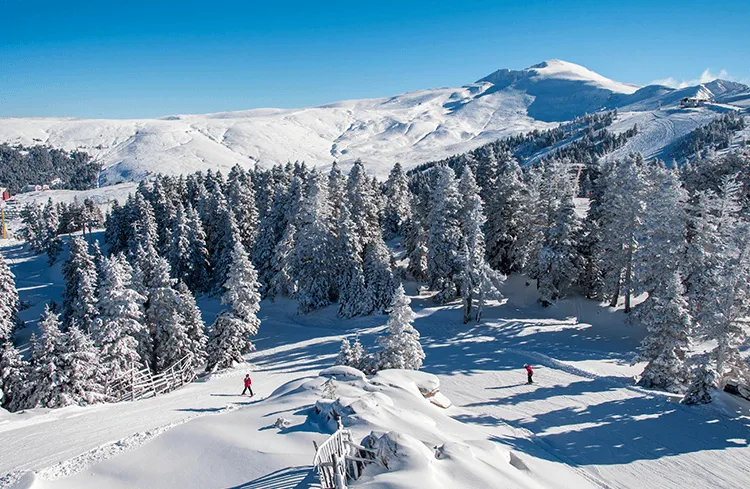
Mt. Ararat is in fact a system of 2 mountains, lesser Mt Ararat and greater Mt. Ararat. Both are dormant, compounded volcanoes. Greater Mt Ararat is the highest mountain in Türkiye, standing at an elevation of 5,137 m (16,854 ft). Lesser Mt Ararat stands at 3,896 m (12,782 ft). These mountains have a long and illustrious history and are held sacred by many as the recorded site of Noah’s Ark.
The first to ascend the peak was Professor Frederick Von Parat on October 9th, 1829. The second ascent came over 140 years later when the former president of the Turkish Mountaineering Federation, Dr. Bozkurt Ergor reached the summit on 21 February 1970, sparking a wave of climbers in the 1980s, ultimately leading to a ban on climbing the fabled peak. This ban was lifted in 1998 and climbs are now permissible only up certain faces of the mountain due to the necessity of maintaining open communication channels with the brave souls who dare to attempt the ascent.
Climbing is best in July-September though winter climbs are also possible. Only experienced climbers with appropriate equipment should attempt the full trek. For those who’d rather watch from the sidelines, the nearby town of Dogubeyazit is charming no matter the season and is close to Ishak Pasha Palace amongst other historical sites.
Demirkazık
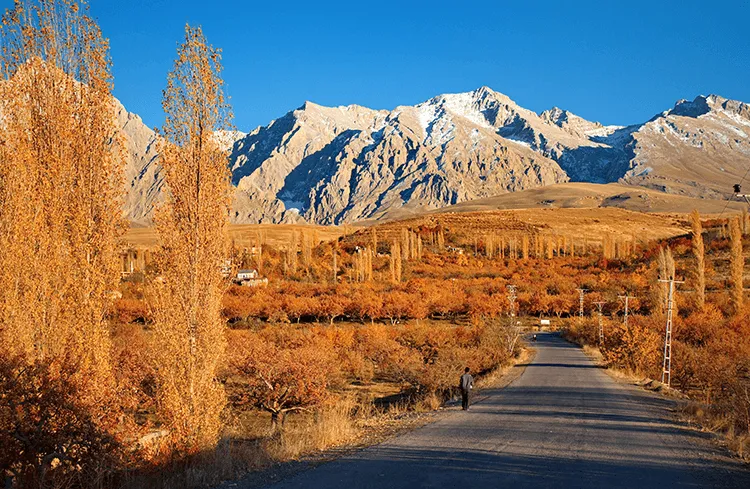
Mt. Ararat is in fact a system of 2 mountains, lesser Mt Ararat and greater Mt. Ararat. Both are dormant, compounded volcanoes. Greater Mt Ararat is the highest mountain in Türkiye, standing at an elevation of 5,137 m (16,854 ft). Lesser Mt Ararat stands at 3,896 m (12,782 ft). These mountains have a long and illustrious history and are held sacred by many as the recorded site of Noah’s Ark.
The first to ascend the peak was Professor Frederick Von Parat on October 9th, 1829. The second ascent came over 140 years later when the former president of the Turkish Mountaineering Federation, Dr. Bozkurt Ergor reached the summit on 21 February 1970, sparking a wave of climbers in the 1980s, ultimately leading to a ban on climbing the fabled peak. This ban was lifted in 1998 and climbs are now permissible only up certain faces of the mountain due to the necessity of maintaining open communication channels with the brave souls who dare to attempt the ascent.
Climbing is best in July-September though winter climbs are also possible. Only experienced climbers with appropriate equipment should attempt the full trek. For those who’d rather watch from the sidelines, the nearby town of Dogubeyazit is charming no matter the season and is close to Ishak Pasha Palace amongst other historical sites.
Süphan

Mt. Ararat is in fact a system of 2 mountains, lesser Mt Ararat and greater Mt. Ararat. Both are dormant, compounded volcanoes. Greater Mt Ararat is the highest mountain in Türkiye, standing at an elevation of 5,137 m (16,854 ft). Lesser Mt Ararat stands at 3,896 m (12,782 ft). These mountains have a long and illustrious history and are held sacred by many as the recorded site of Noah’s Ark.
The first to ascend the peak was Professor Frederick Von Parat on October 9th, 1829. The second ascent came over 140 years later when the former president of the Turkish Mountaineering Federation, Dr. Bozkurt Ergor reached the summit on 21 February 1970, sparking a wave of climbers in the 1980s, ultimately leading to a ban on climbing the fabled peak. This ban was lifted in 1998 and climbs are now permissible only up certain faces of the mountain due to the necessity of maintaining open communication channels with the brave souls who dare to attempt the ascent.
Climbing is best in July-September though winter climbs are also possible. Only experienced climbers with appropriate equipment should attempt the full trek. For those who’d rather watch from the sidelines, the nearby town of Dogubeyazit is charming no matter the season and is close to Ishak Pasha Palace amongst other historical sites.
